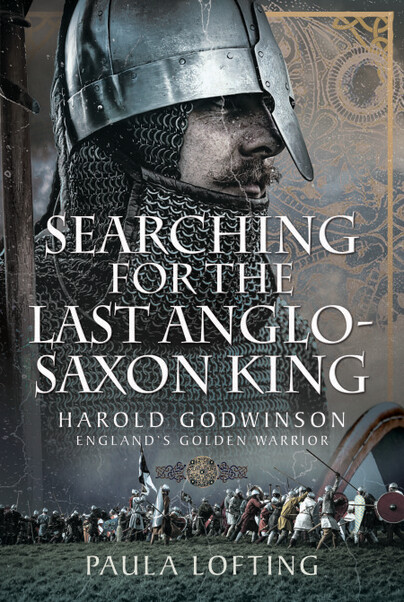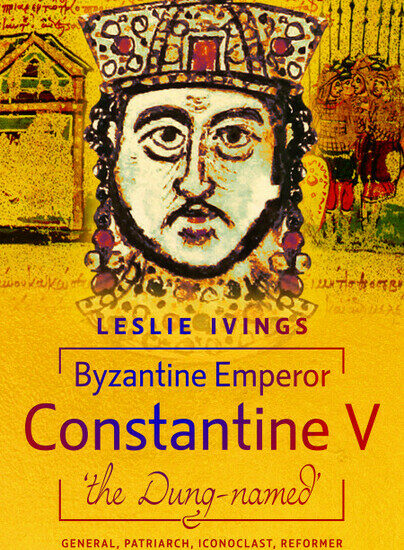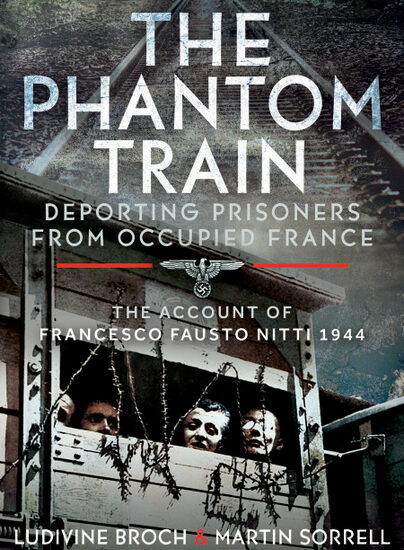Searching for the Last King of Anglo-Saxon England, Harold Godwinson, England’s Golden Warrior
A new biography that aims to shed light on one of England’s greatest heroes.
Author guest post from Paula Lofting.
The Battle of Hastings seems to be a far less known event than it was once. Go back twenty or so years ago and more people seem to have been familiar with it than they are now. Go back even further to the 900th anniversary of the battle in 1966, and most people would know this pivotal event in our history.
Today I am hard put to find anyone apart from die hard historians who would know that our last Saxon English monarch, Harold II, died in 1066 on a field near Hastings. They are more likely to know that the first king of England was William the Conqueror – also known as William, Duke of Normandy, or William the Bastard. When people ask me who Harold Godwinson was, I prompt them by mentioning, ‘you know, 1066 and all that, shot with an arrow in the eye’ – and they suddenly know who I am talking about – though it is actually a myth that he was shot in the eye. Beyond this, he is mostly relegated to the shadows in English history and is probably less well known than Alfred the Great or Cnut. I wanted to do something to rectify that and shine a torch on what I believe to be a great hero in English history.

Harold Godwinson’s reign of nine months and nine days was one of the shortest, which partly explains his obscure presence in history. However, Harold’s story spans some forty odd years, and for at least twenty years of his life he played a lead role in the events that led him to become Edward the Confessor’s successor, and eventually his death in that same year. He came from a high-profile family who dominated the first half of the eleventh century. Their wealth exceeded even that of the Confessor’s when they were at the height of their influence. Harold’s sister, Edith, was queen of England, and their patriarch, Earl Godwin, rose to become the second most important man in the kingdom.
Though not the only famous family of their time, the Godwinsons have also fascinated contemporary and modern historians, like Edward Freeman and Frank Barlow, for decades. However, no Godwinson story can be told without Harold at the centrepiece, and no story of Harold can be fully understood without a discussion of his family. This is why I have endeavoured to include the members in such a way that adds context and clarity to the narrative but with the caveat that this is Harold’s book and not a book about the Godwinsons.

People often ask where my interest in Harold Godwinson came from, and I tell them it was not so much the man himself who lured me, but the era itself that drew me to him. Writing a series about a fictional family set in England in the years leading up to the Battle of Hastings and the Norman Conquest, he naturally cropped up as an important player, so it was necessary to do the research not just to create an authentic historical background, but an authentic Harold Godwinson.
The Norman sources have always been very derogatory about Harold and some Welsh historians refer to him negatively. The former have been especially vitriolic and the later the source, the more villainous he became. Determined to find out the reason why, I dug deeply and found that in order to justify his regicide of an anointed king and invasion of England, William needed to render Harold as monstrous and tyrannical as possible. Harold was portrayed as having ascended the throne by force, rather than by the agreement of the witan, an oath breaker rather than someone who was coerced to swear on holy relics with thinly veiled threats. He was an honoured guest who had perjured himself before God, rather than a hostage whose release came with conditions. In other words, for the crime of ‘usurping’ the throne from the man whose right to it did not exist, he had to die.
Essentially, what I wanted to do was to find the true fundamental nature of Harold in the context of his time, the world in which he lived in, his deeds, his achievements and failures and what were the circumstances that led to his downfall at the Battle of Hastings. As far as medieval kings went, he was an effective administrator and diplomat, avoiding conflict when possible and responding appropriately in times of crisis and according to the practices of the period. He was not a murderer, in fact there is no recorded evidence that he had anyone slain. He was certainly not a monster, but evidence shows that he treated adversaries fairly. Nor was he a philanderer, and by all accounts was true to his long-term wife, Edith Swanneck, at least until, out of necessity, he was allied with Aldith of Mercia, to stabilise England upon his ascendancy to the crown. And what little time he spent as king was spent well until that fateful day in October 1066, when luck went against him and his life was brought to an end by four-man Franco/Norman hit squad, butchered on a field near Hastings.

……………………………………………………………………

Paula was born in the ancient Saxon county of Middlesex in 1961. She grew up in Australia hearing stories from her dad of her homeland and its history. As a youngster she read books by Rosemary Sutcliff and Leon Garfield and her love of English history grew. At 16 her family decided to travel back to England and resettle. She was able to visit the places she’d dreamt about as a child, bringing the stories of her childhood to life. It wasn’t until later in life that Paula realised her dream to write and publish her own books. Her debut historical novel Sons of the Wolf was first published in 2012 and then revised and republished in 2016 along with the sequel, The Wolf Banner, in 2017. The third in the series, Wolf’s Bane, will be ready for publishing later this year.
In this midst of all this, Paula has acquired contracts for nonfiction books with the prestigious Pen & Sword publishers. Searching for the Last Anglo-Saxon King, Harold Godwinson, England’s golden Warrior was published at the end of February, and a biographic of King Edmund Ironside is also in the pipeline. She has also written a short essay about Edmund for Iain Dale’s Kings and Queens, articles for historical magazines. When she is not writing, she is a psychiatric nurse, mother of three grown up kids and grandmother of two and also re-enacts the Anglo-Saxon/Viking period with the awesome Regia Anglorum.
Book Links


